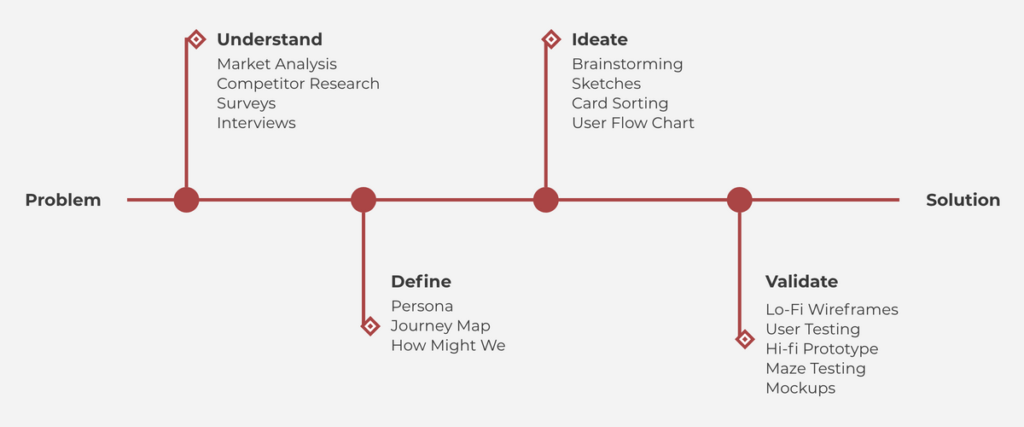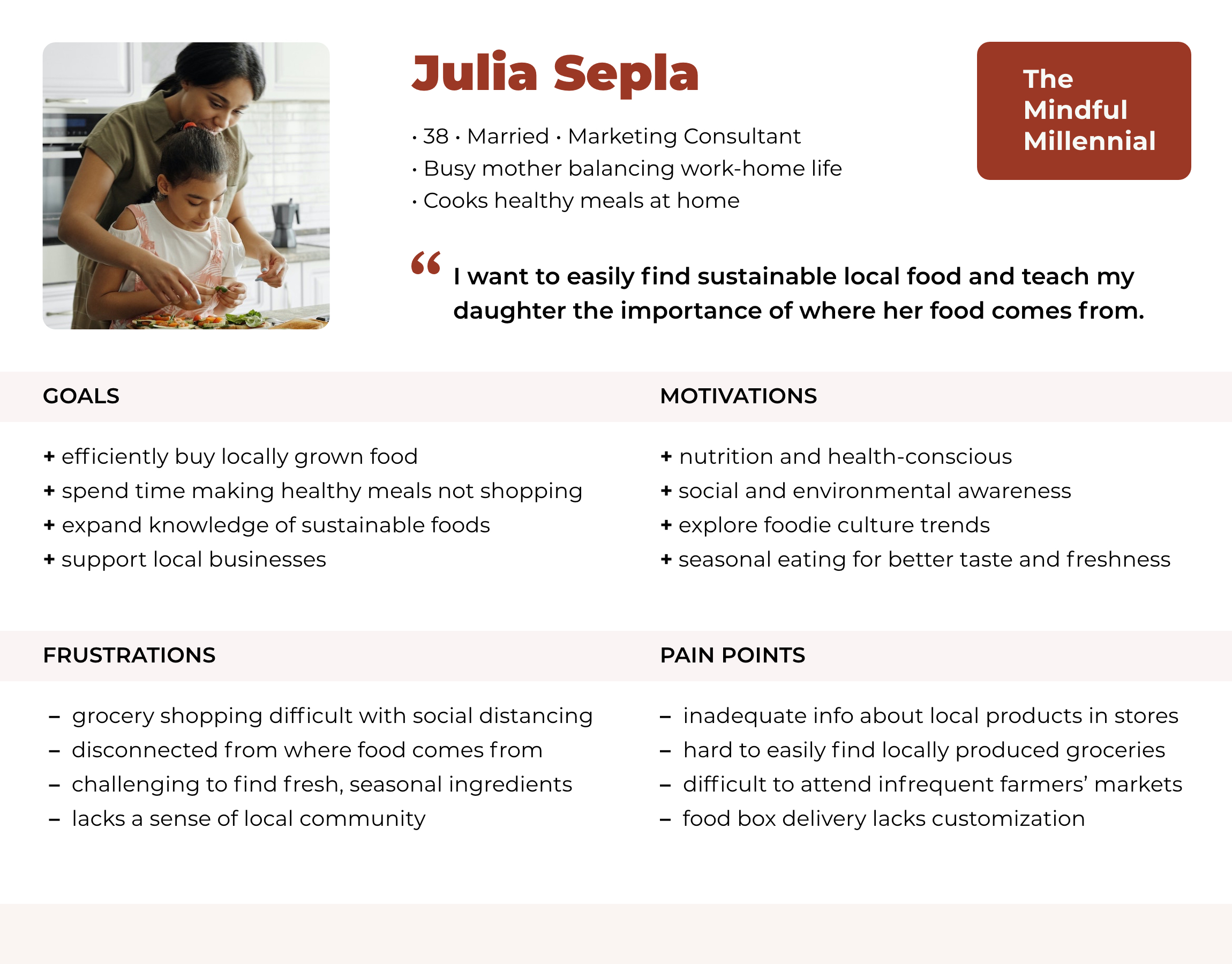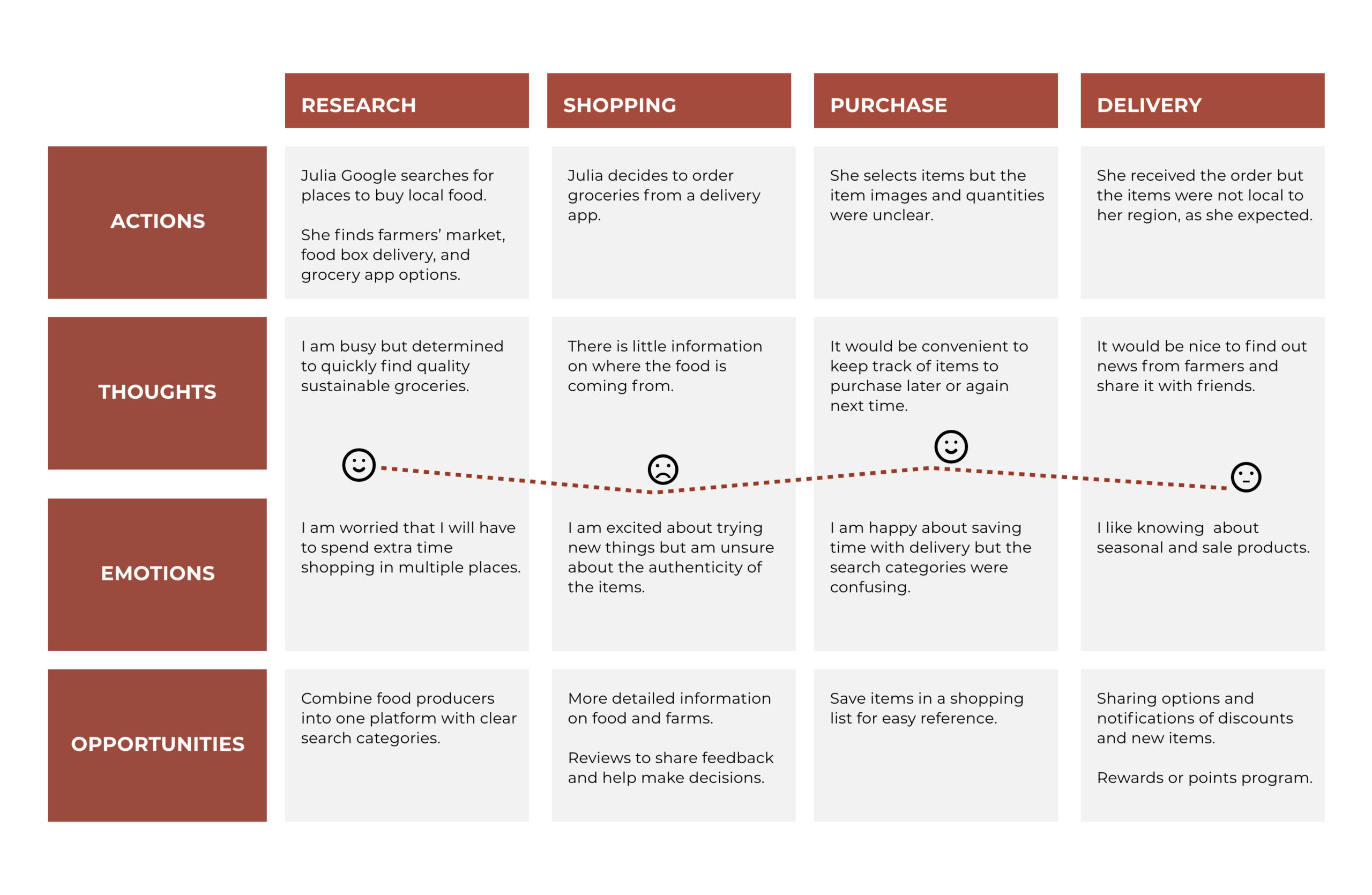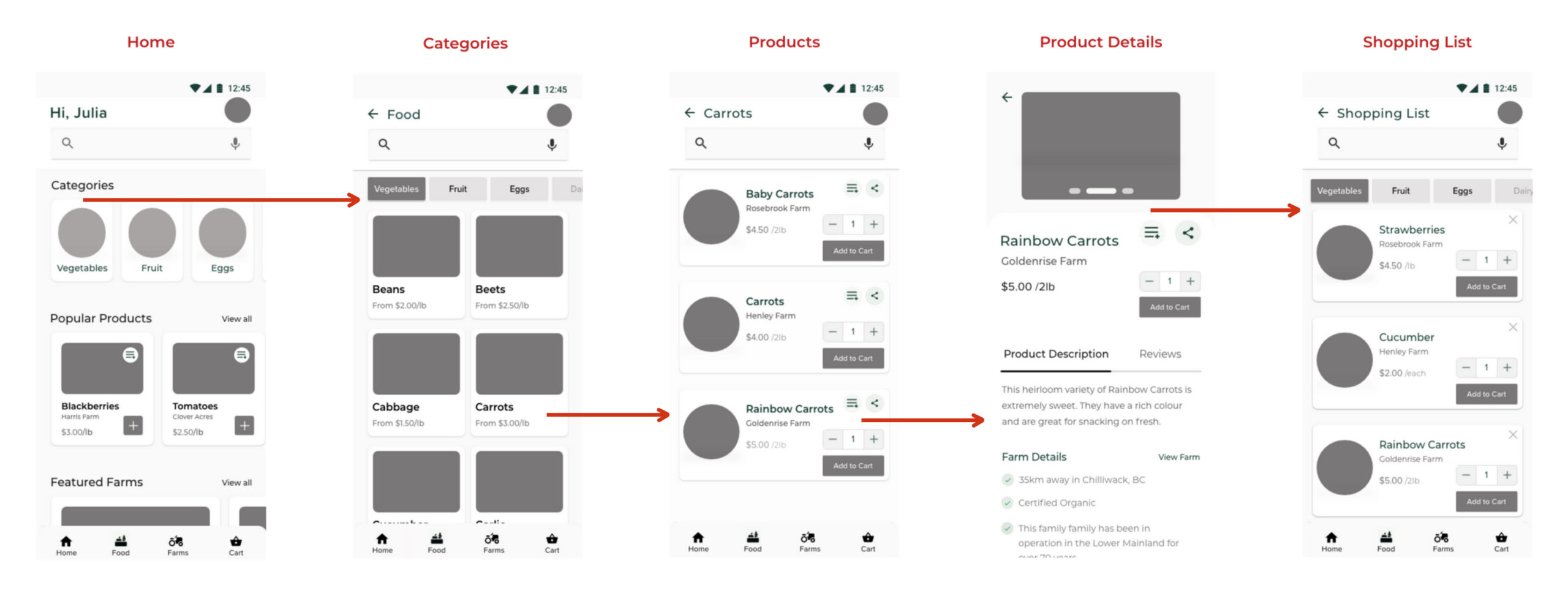LOCAVORE
A mobile app that connects people to local farm fresh food and delivers directly from producers to your door.
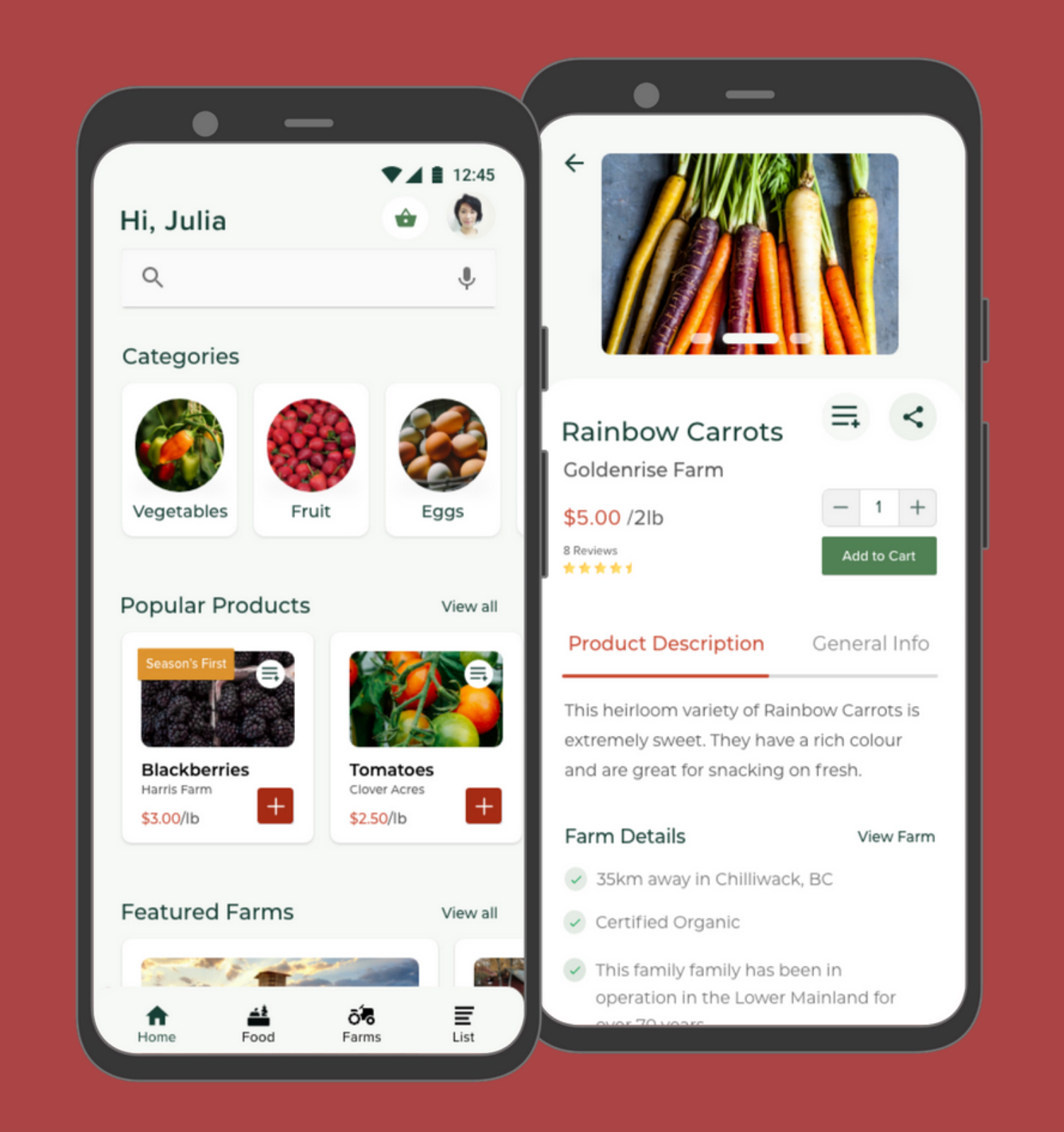
ROLE
UX Writer
TIMELINE
February 2021 – March 2021
TOOLS
Figma, Miro, Maze
Project Overview
Sustainable food purchasing is gaining popularity, along with online grocery shopping. Part of this increased consumer demand involves buying locally sourced food, sometimes directly from the producer.
However, in a socially distanced landscape it can be difficult for shoppers to discover these local products. It is also challenging for food producers to connect with shoppers.
I aim to create a platform that offers an intuitive experience for users to take control of their local food purchasing needs – a place where users can easily and enjoyably find sustainable food for home delivery.
THE CHALLENGE
How might we provide people with an engaging farm direct shopping experience to conveniently access quality local food?
THE SOLUTION
Locavore is a food delivery app based on a farm to table approach to grocery shopping. The app aims to create a personalized shopping experience, provide detailed information about quality local food and producers, and build a connection with the local food community.
Convenience
46% wanted to save time and 42% desired to avoid a physical store. Reordering options were especially appealing to women shopping online.
Food Navigator 2018, Mintel
Recommendation
Consumers look to friends and family for input when learning about new products and making food and beverage decisions.
Food Navigator 2018, Mintel
Organization
55% of people created a shopping list before going online and 12% prefilled their digital shopping carts with planned purchases. Field Agent Digital Shopper Report 2018
In the Neighbourhood: Competitor Research
In my competitive analysis I noticed some shortfalls of current grocery app interfaces. Many lacked product details and did not provide ways for users to organize their food preferences.
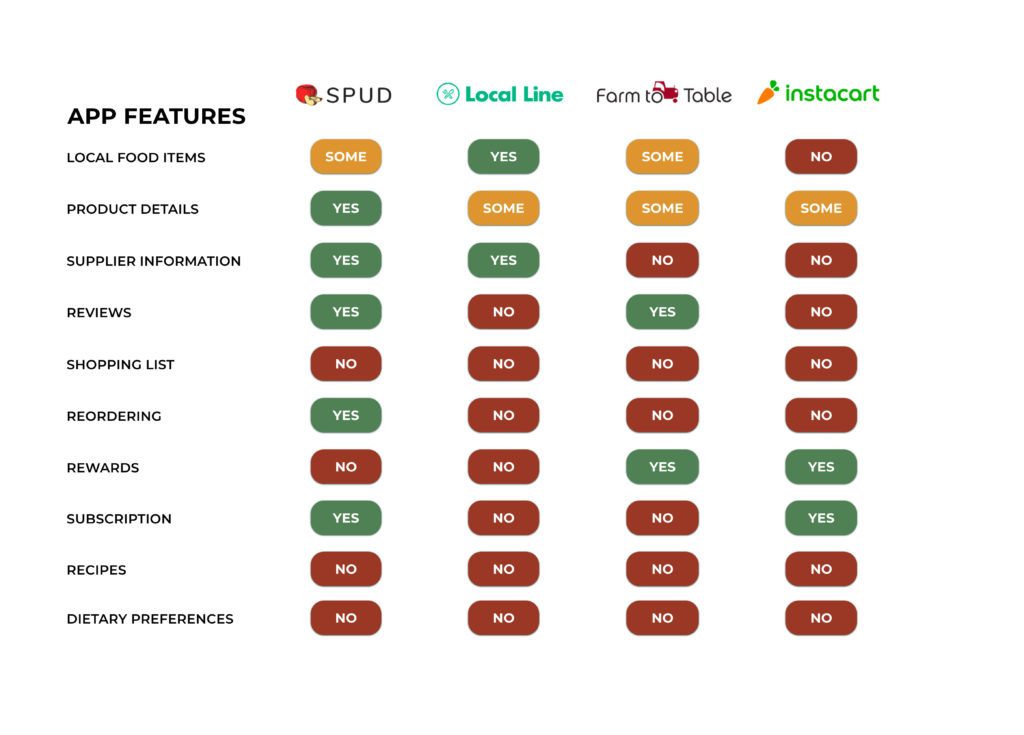
THE USER RESEARCH
Field Offerings: Surveys
To focus on the user’s current problems with buying local food, I surveyed shoppers to uncover the motivations behind local food preferences and decisions around online grocery shopping.
72%
of people surveyed find it difficult to purchase the local food they want in grocery stores.
3 in 4
people believe local food is more sustainable, higher quality, and healthier.
68%
of millennials surveyed would rather buy locally sourced ingredients.
What Users Had to Say: Interviews
THE INSIGHTS
The Root of the Matter: Findings
After analyzing the user research findings, the challenges of purchasing local food can be summarized into these 3 categories.
Difficulty Finding Local Food Details
Few FOod REviews and Sharing
Lack of planning with Shopping Lists
The Seeds of Change: Main Goals
- To design a more personable and intuitive user interface to quickly access local food details
- To enable connection with the sustainable food community
- To facilitate a more engaging and seamless navigation experience of planning online purchases
THE VISION
User Task Flow
After a brainstorming session and a card sorting exercise, a basic user flow was created for the initial tasks in the app.

THE DESIGN PROCESS
Wireframes
Low fidelity wireframes visualized the user’s path of finding and selecting a product, to adding it to their shopping list.
USABILITY TESTING
Taking the App for a Test Drive: User Testing
With the low fidelity prototype I conducted Maze user testing to determine what needed to change and how.
After further iterations and user testing with high fidelity wireframes, I addressed user frictions to provide alternate solutions.
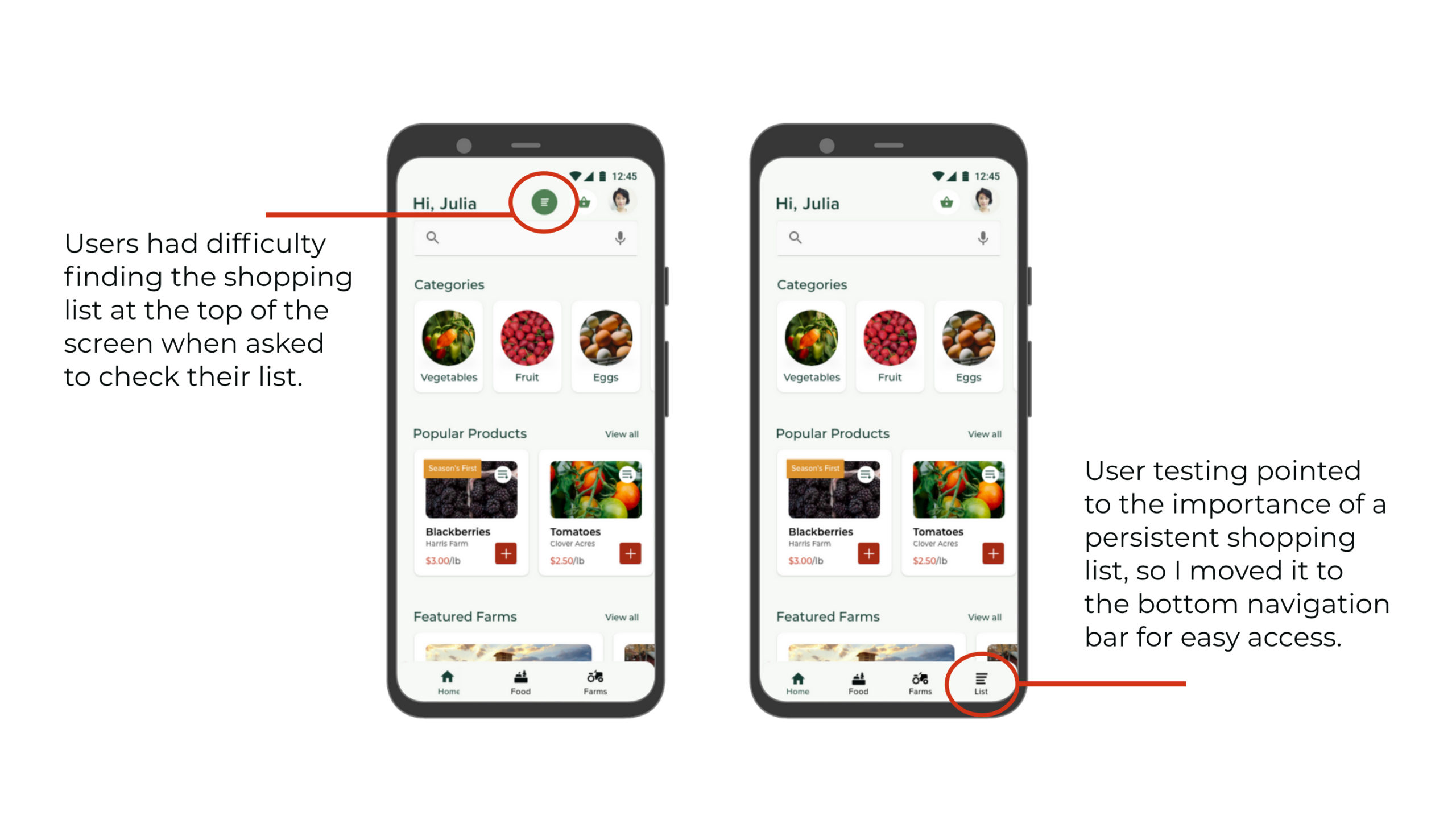
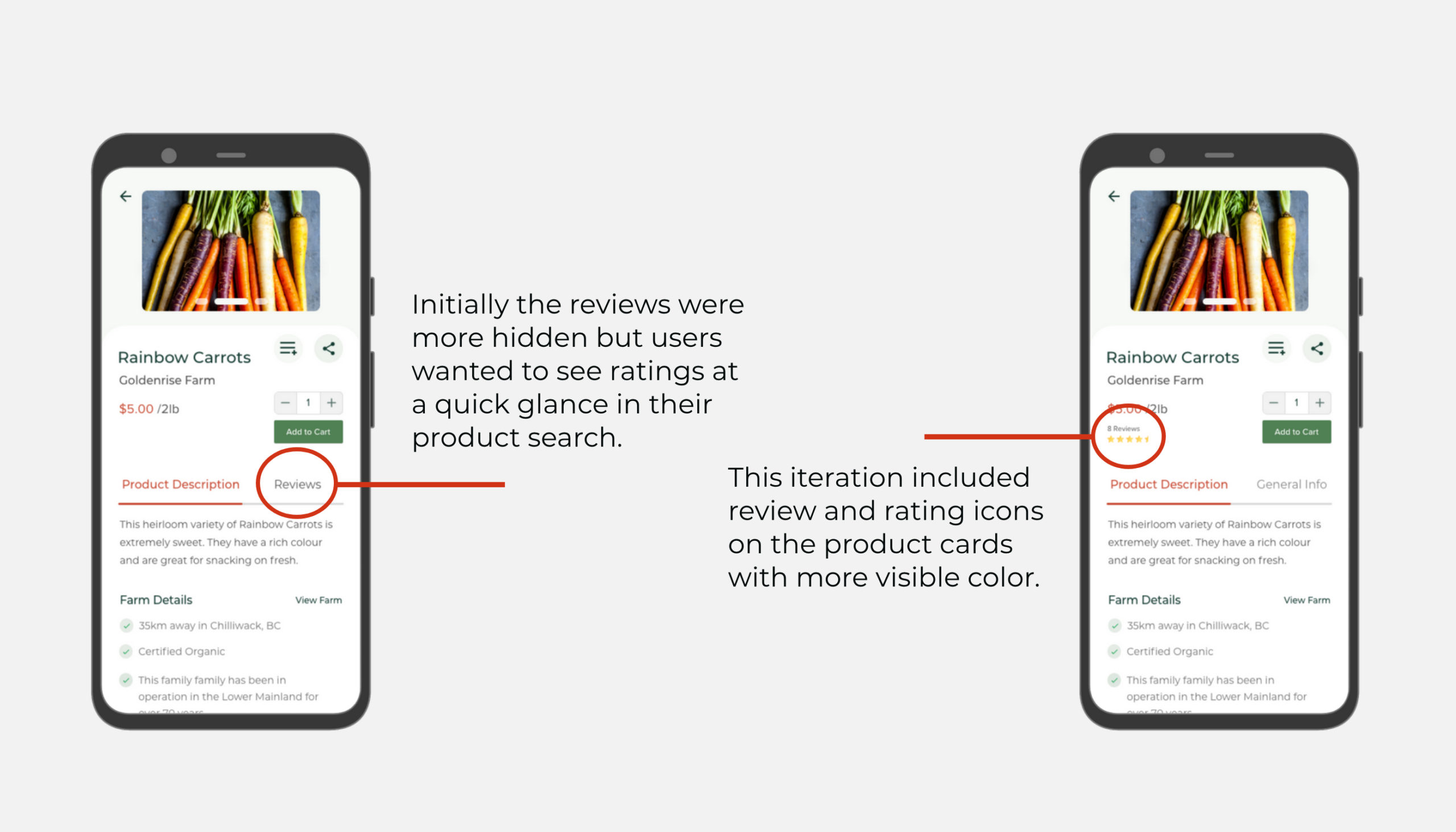
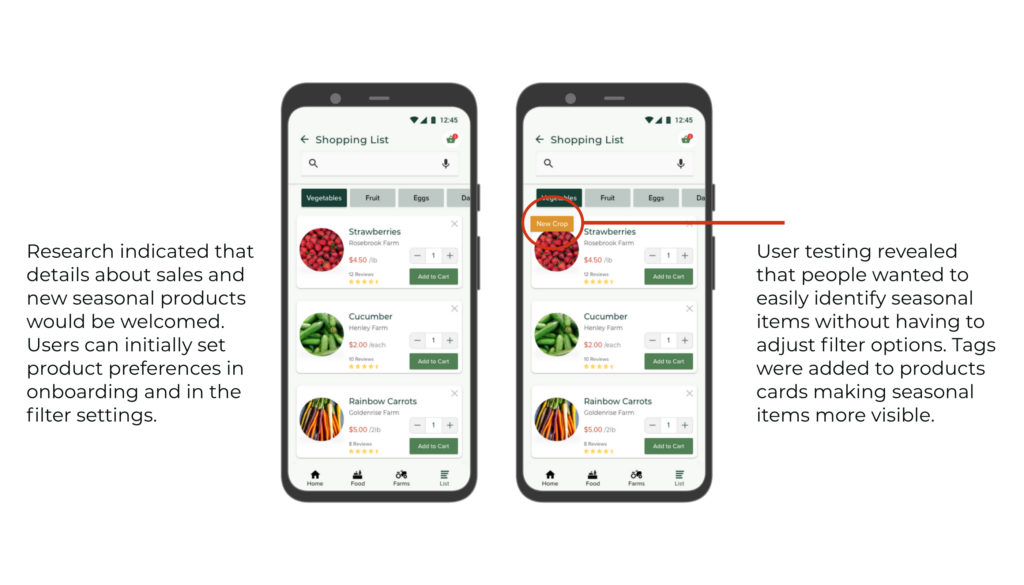
THE RESULTS
Connecting the Dots: Mockups

THE KEY TAKEAWAYS
What I learned throughout the process was the usefulness of early rounds of user testing with low fidelity prototypes. Given the short time frame of the project this allowed me to make effective iterations more quickly.
THE NEXT STEPS
I am developing the ordering and payment screens and a rewards system for purchase discounts. I would like to add more features like locally-based recipe suggestions featuring various farms.
I am always looking to improve upon my design process and find innovative ways to enhance user experiences. I will continue to update this case study, and until then thanks for reading.
